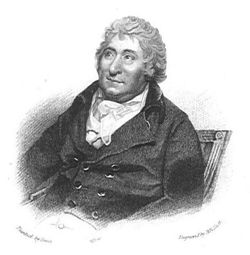Annotation:Harlequin Every Where: Difference between revisions
No edit summary |
No edit summary |
||
| Line 1: | Line 1: | ||
'''Back to [[{{BASEPAGENAME}}]]''' | =='''Back to [[{{BASEPAGENAME}}]]'''== | ||
---- | ---- | ||
<p><font face="garamond, serif" size="4"> | <p><font face="garamond, serif" size="4"> | ||
| Line 25: | Line 25: | ||
<br> | <br> | ||
---- | ---- | ||
'''Back to [[{{BASEPAGENAME}}]]''' | =='''Back to [[{{BASEPAGENAME}}]]'''== | ||
Revision as of 03:43, 15 December 2015
Back to Harlequin Every Where
HARLEQUIN EVERY WHERE. English, Country Dance Tune (6/8 time). A Major. Standard tuning (fiddle). AABB. The Mirror: or, Harlequin Every-Where was a 'pantomimical burletta', in three parts, staged at the Theatre-Royal in Covent-Garden in 1779. Music was composed by Charles Dibdin (1745-1814).

Dance directions were entered into the commonplace book of Seabrook, New Hampshire, musician Jeremiah Brown, which contains melodies and figures of country dances, begun c. 1782. The tune appears in the c. 1770 music manuscript of Lincoln musician William Clark, although likely entered at a later time, in another hand ("Vento's Farewell" is on the facing page, also printed by the Thompson's, and likely entered into the ms. at the same time).

Source for notated version:
Printed sources: Thompson (Compleat Collection of 200 Favourite Country Dances vol. 5), 1788; p. No. 157, p. 79.
Recorded sources:
